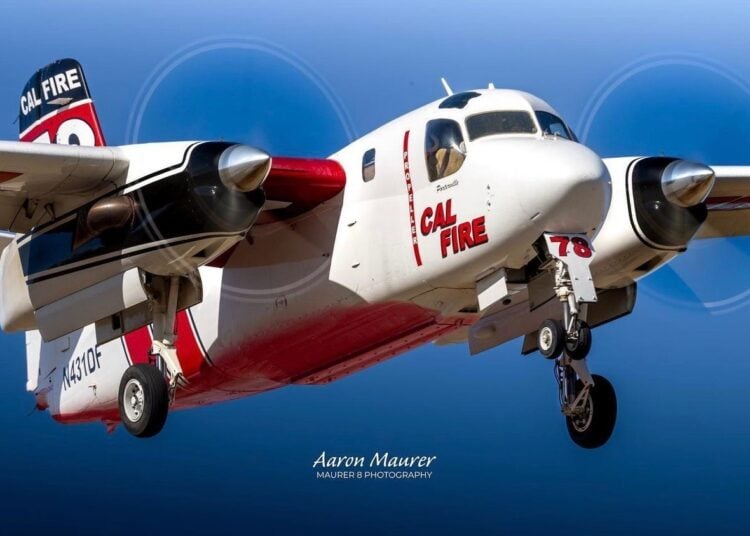CAL FIRE and the Bureau of Land Management sign a statewide Good Neighbor Authority agreement making it easier to work across land jurisdictions and boundaries.
(SACRAMENTO) – The California Department of Forestry and Fire Protection (CAL FIRE) and the U.S. Bureau of Land Management (BLM) have accelerated efforts to combat catastrophic wildfires while improving and restoring the health of California forests.
Through a nationwide initiative known as the Good Neighbor Authority, CAL FIRE and the BLM have entered a statewide agreement and contract worth approximately $4.5 million, made available to CAL FIRE as part of the agreement, to increase coordination for restoration, fuels reduction, and forest health projects on BLM-managed public lands in California.
BLM oversees 15 million acres of public land in California, which is approximately 15 percent of the state's total land mass. “This groundbreaking collaboration between CAL FIRE and the BLM promises to be a vital step in safeguarding California's natural resources and communities from the devastating impacts of wildfires,” Matthew Reischman, Deputy Director for Resource Management at CAL FIRE said.
“Through strategic planning and joint efforts, this partnership streamlines planning steps and seeks to foster a healthier and more resilient environment—one that is better equipped to withstand the challenges posed by wildfire and other ecological stressors.” The primary objective of this contract is to mitigate the potential devastation caused by wildfires specifically on BLM lands.
By joining forces, the agencies can pair similar goals of sometimes separate projects on adjacent or nearby lands and further reduce the risks associated with wildfires while improving overall ecosystem health. This includes fostering natural wildfire resilience, safeguarding ecosystem health, and enhancing emergency response capabilities on BLM lands.
“We are excited to partner with CAL FIRE on important projects on BLM-managed public lands throughout California,” said BLM California State Director Karen Mouritsen. “These agreements will result in better coordination for activities to reduce fuels that feed wildfires, protect wildlife habitat, improve forest health, and restore important watersheds.” Deputy Director Reischman hailed the Good Neighbor Authority agreement as an essential first step for the agencies to work together and achieve common objectives in California.
He emphasized that the contract lays the foundation for a myriad of management opportunities aimed at creating a more resilient state. The benefits of this partnership also extend beyond wildfire prevention, as the agreement also strives to fortify BLM wildlands against climatic stressors like drought. It also addresses potential threats posed by insects and fungi, which impact the overall health of natural systems.
Under this agreement, CAL FIRE can work to accomplish state goals on federal (BLM) lands, with priority projects identified based on alignment of CAL FIRE and BLM strategic goals. Examples of this can include projects connecting fuel-breaks that cross from the State Responsibility Area to BLM lands, to completing fuel reduction in targeted areas that pose a significant threat to communities by catastrophic wildfire, to post-fire restoration and hazard reduction in areas impacted by wildfire or other climate stressors.
In the past, coordinating these projects may have required months or years of coordination while addressing a range of hurdles due to jurisdictional boundaries. Now, projects may encompass a wide range of activities, with the hope for seamless coordination across state and BLM lands, authorized by the Good Neighbor Authority, such as undertaking National Environmental Policy Act preparations, implementing fuel reduction measures, and engaging in watershed restoration initiatives, among other activities. This agreement reflects a positive step toward reaching the goal of treating one million acres of forest and wildlands annually by 2025, as described in the Shared Stewardship Agreement.
The treatments will be driven by public safety and ecological goals including reducing wildfire impacts in high priority areas and maintaining and restoring healthy, resilient forests and rangelands.
The plan is to use science-based management to ensure vegetation treatment tools are ecologically appropriate to specific vegetation and landscapes. Treatments will include thinning in excessively dense stands, timber harvesting, mechanical fuel reduction, prescribed fire, grazing, and reforestation.
To learn more about this agreement in California, see Bureau of Land Management’s News Release. To learn more about CAL FIRE’s forest health and resource management programs, visit CAL FIRE’s Natural Resource Management webpages.






